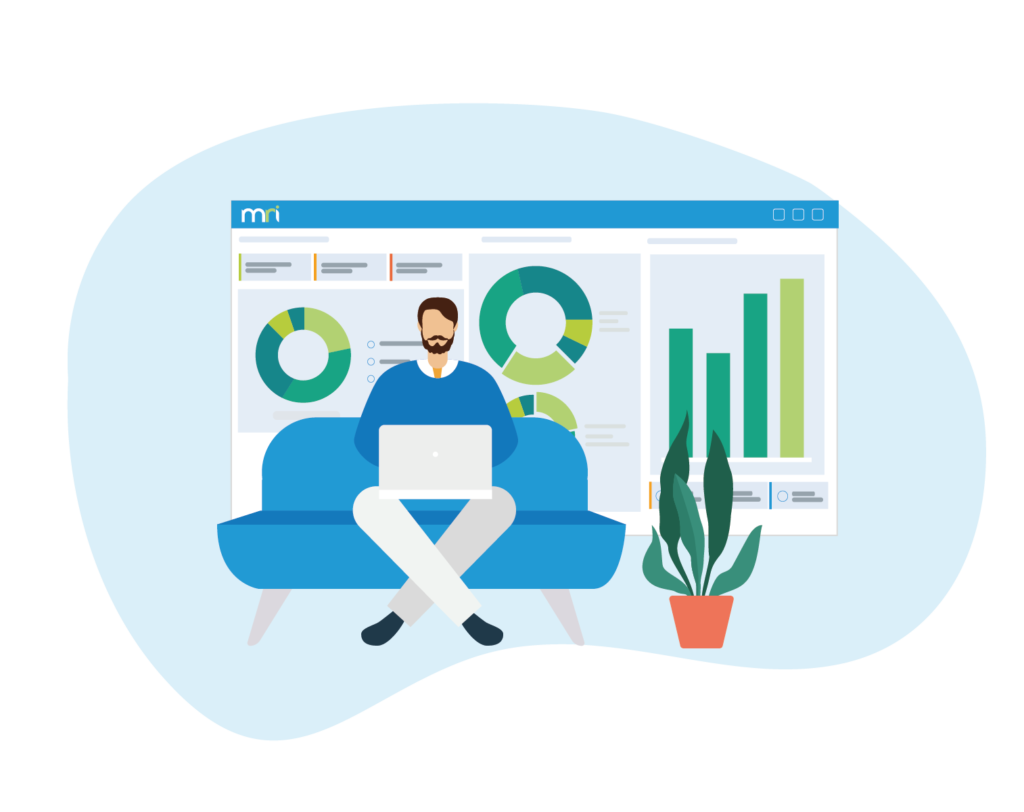What is common area maintenance (CAM) and why should you keep track of it?
Welcome to MRI Software’s exploration of a critical aspect of commercial property management: Common Area Maintenance (CAM). But what is Common Area Maintenance and how does it intersect with real estate expense recoveries?
Common area maintenance (CAM) encompasses the tasks and costs associated with maintaining shared spaces within a commercial property, a fundamental component of real estate management. Understanding the common area maintenance definition is vital for anyone involved in commercial real estate, whether landlords, tenants or property managers.
MRI Software specialises in innovative commercial property management software designed to simplify and optimise CAM and other complex real estate expenses. In this post, we will unravel the details of CAM – common area maintenance, shedding light on its significance and demonstrating how our state-of-the-art solutions can transform the way you manage your commercial properties.
What is common area maintenance (CAM)?
Understanding the operational intricacies of a commercial retail space requires comprehensive knowledge of various aspects, including common area maintenance (CAM). But what is common area maintenance and why is it so vital for commercial retail managers?
The common area maintenance definition is the process of maintaining shared spaces within a commercial property. These shared spaces typically include foyers, car parks, lifts, toilets and landscaped areas that are used by multiple tenants. CAM is essential for maintaining the aesthetic appeal and functionality of these common areas, thereby contributing to a comfortable and inviting environment for shoppers and clients.
CAM charges are usually included in the lease agreements between landlords and tenants, with costs being apportioned based on the tenants’ proportional usage of the shared spaces. As a commercial retail manager, understanding what common area maintenance is, helps you in the effective negotiation of lease agreements and in maintaining positive tenant relationships.
The precise services encompassed under CAM can vary but generally include cleaning, landscaping, security and routine repairs. Common area maintenance directly influences the overall quality and appeal of the retail environment. Commercial retail managers should carefully review CAM clauses in lease agreements and work collaboratively with landlords to ensure that all common areas are maintained to the highest standard. By doing so, they contribute to a flourishing and welcoming commercial space that attracts and retains customers.
How does common area maintenance work?
The expenses related to CAM are typically borne by the tenants, allocated according to their proportionate share of the entire property. The landlord or property management company usually oversees the CAM, handling tasks such as cleaning, landscaping, security and general maintenance. CAM charges are often clearly defined in lease agreements, outlining the exact services and the calculation method for each tenant’s share.
Understanding the mechanics of CAM is vital for retail managers, as it ensures the property’s appearance and functionality are maintained to high standards, promoting a vibrant and appealing retail experience.
What is included in common area maintenance?
Common area maintenance incorporates two key elements, usable area and common area which we explore in further detail below.
Usable area
In commercial real estate, usable area refers to the space exclusively occupied by a tenant, such as the interior of a retail store. When calculating common area maintenance (CAM) charges, the usable area plays a significant role.
CAM expenses are typically split among tenants based on their proportional usable area within the commercial property. Calculating CAM costs on the usable area ensures that tenants contribute to maintaining shared spaces in alignment with the size of their specific leased premises.
Retail managers must be attentive to how the usable area is defined and measured in lease agreements, as it directly influences the CAM charges. Accurate understanding and calculation of usable areas foster transparent and fair distribution of costs, vital for maintaining harmonious landlord-tenant relationships.
Common area
Common areas within a commercial retail complex include shared spaces such as foyers, toilets, walkways and car parks that are accessible to all tenants and visitors. Common area maintenance (CAM) specifically focuses on the maintenance and upkeep of these common areas to ensure they are functional, tidy and welcoming at all times. The CAM charges typically outlined in lease agreements are allocated to tenants based on a defined method, often linked to their proportionate share of the total space.
Including common areas as part of CAM ensures that all tenants contribute fairly to maintaining these shared facilities. Commercial retail managers need to account for this to effectively manage their property expenses and provide an appealing and functional commercial environment.
What are CAM reconciliations?
Common area maintenance reconciliations ensures that the actual CAM expenses align with the estimated charges that were passed on to tenants throughout the lease term.
Typically, landlords or property management companies provide tenants with an estimate of CAM charges at the beginning of the year. These charges are then billed to the tenants on a monthly or quarterly basis. At the end of the year, a reconciliation process is undertaken to compare the estimated charges against the actual expenses incurred.
If the actual CAM costs were higher than estimated, tenants may be billed for the difference. Conversely, if the actual costs were lower, tenants may receive a credit or refund for the overpayment. The reconciliation process requires a detailed review of all invoices and expenditures related to common area maintenance, ensuring accuracy and transparency.
CAM reconciliations can be complex and may lead to disputes if not handled properly. It is vital for retail managers and landlords to maintain clear communication and provide detailed documentation of all CAM-related expenses. This collaborative approach enhances trust and minimises conflicts, resulting in smoother relationships between landlords and tenants whilst ensuring that common areas are consistently maintained to the highest standards.
What happens when CAM fees are inaccurate?
Inaccurate common area maintenance fees can lead to conflicts between landlords and tenants. When CAM fees are either overestimated or underestimated, it disrupts the budgeting process for tenants and can cause financial strain. Overcharges may lead to tenant dissatisfaction and potential legal disputes, while undercharges could result in unexpected bills for tenants at reconciliation time. In either scenario, relationships may be strained and the credibility of the property management team may be questioned.
Accurate CAM calculations are thus essential for maintaining harmonious relationships and ensuring that shared spaces within the commercial property are maintained appropriately.
Is common area maintenance considered as rent?
Common area maintenance charges are typically separate from rent but are closely related in commercial lease agreements. While rent covers the cost for the exclusive use of a tenant’s specific space, CAM charges are allocated for the maintenance and upkeep of shared areas used by multiple tenants. These charges are often outlined explicitly in the lease and may be billed separately or together with the rent. Whilst CAM is not considered rent in the traditional sense, it is a regular and obligatory financial responsibility for tenants, much like the rent itself.
Contact MRI Software
MRI Software develops commercial property management software for real estate organisations to optimise their systems and processes. To find out more about how we can help, contact us today on +44 (0)20 3861 7100.
Commercial Real Estate Software
Increase efficiency, reduce costs, and maximise portfolio performance.

Chesterfield Borough Council modernises estate and facilities management with MRI Software
Chesterfield Borough Council has selected MRI Software’s property, lease, and facilities management solutions to modernise its processes and drive innovation. This strategic investment supports the Council’s ambitions. A Fully Integrated Property and…

